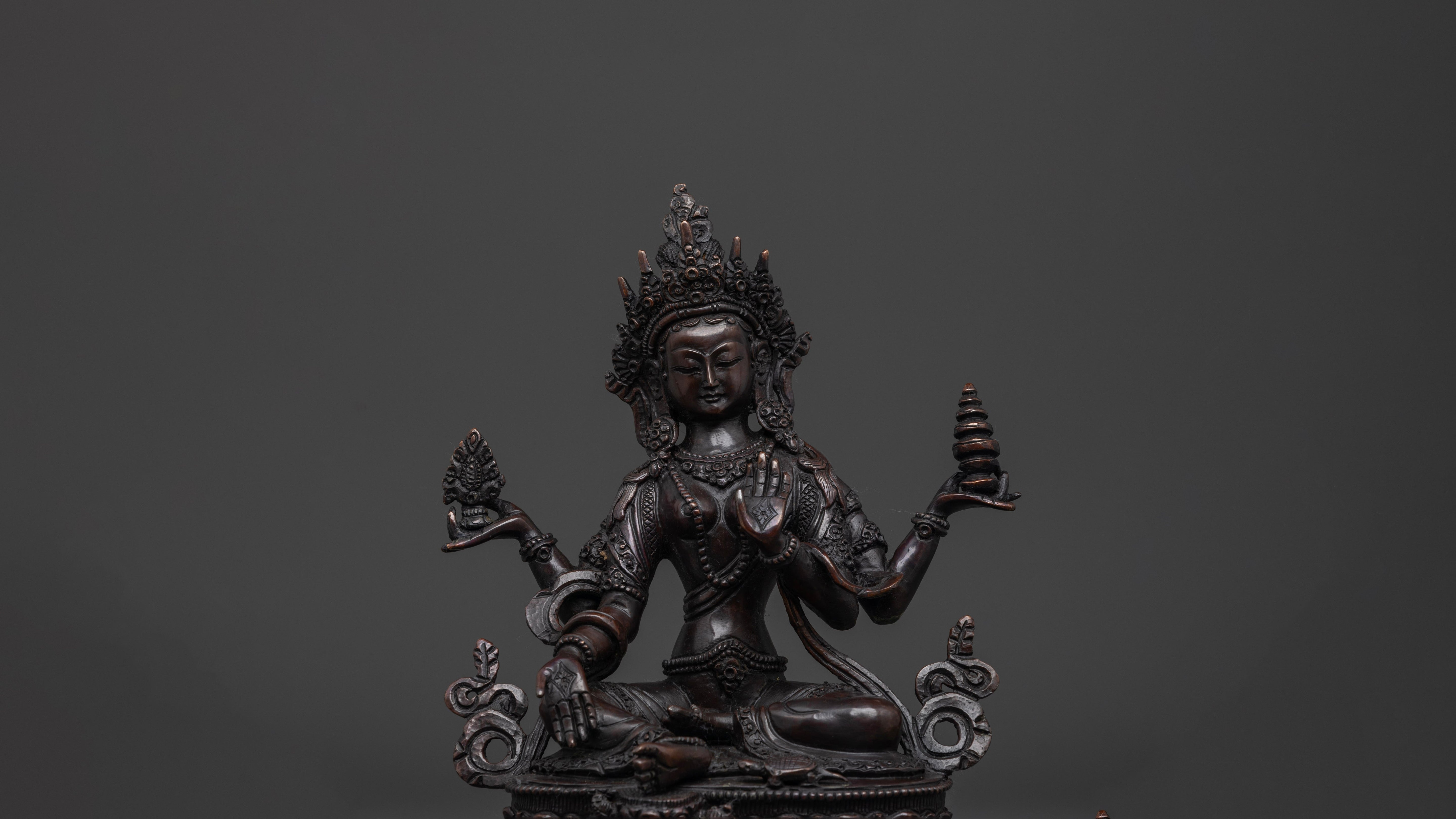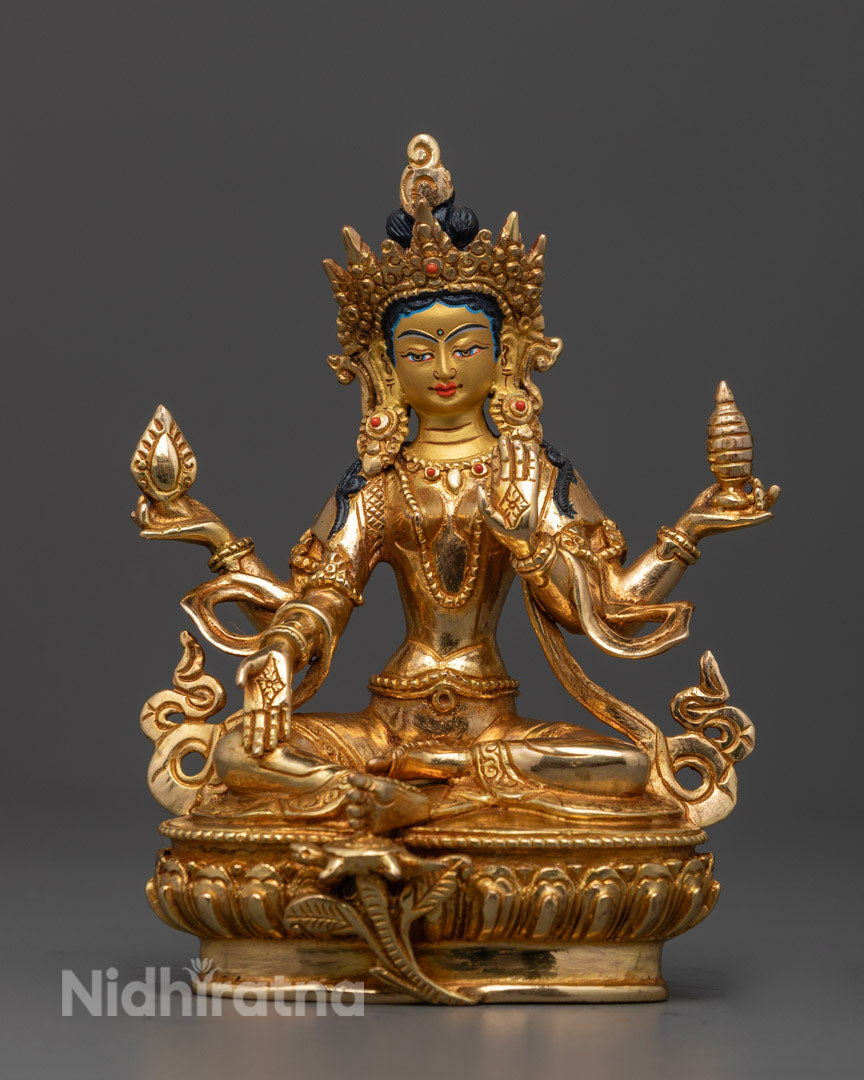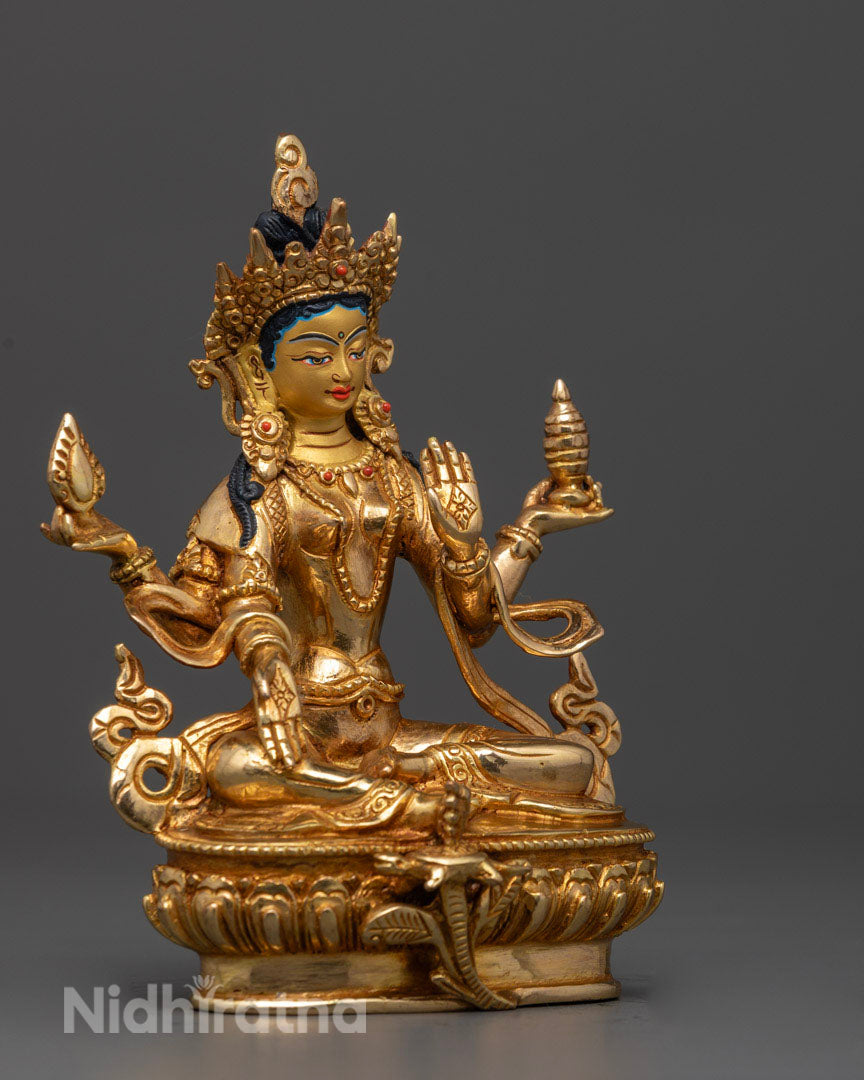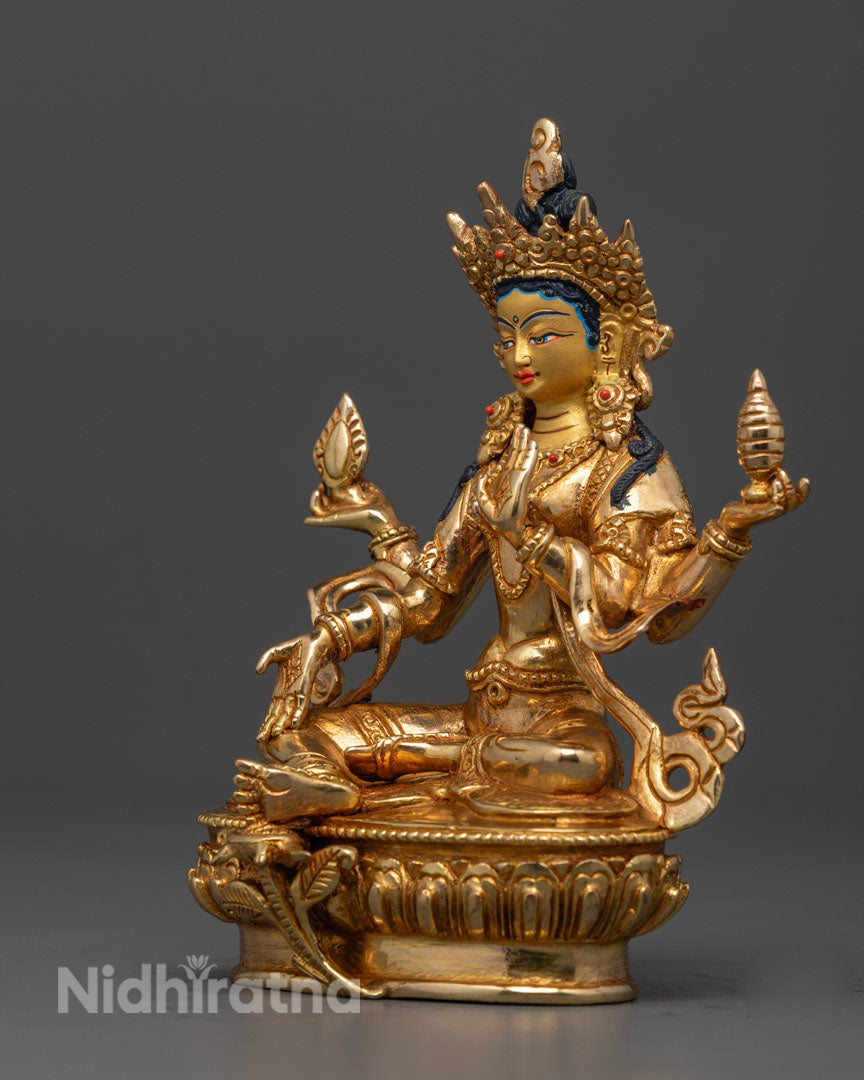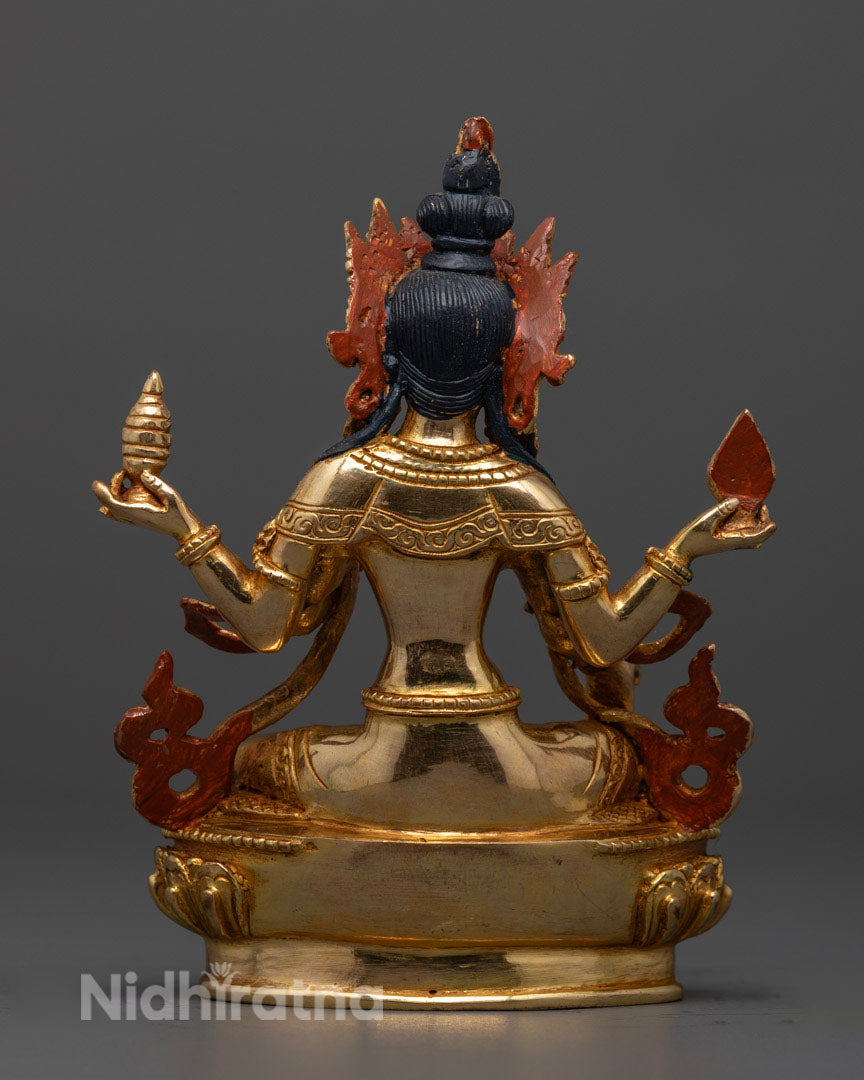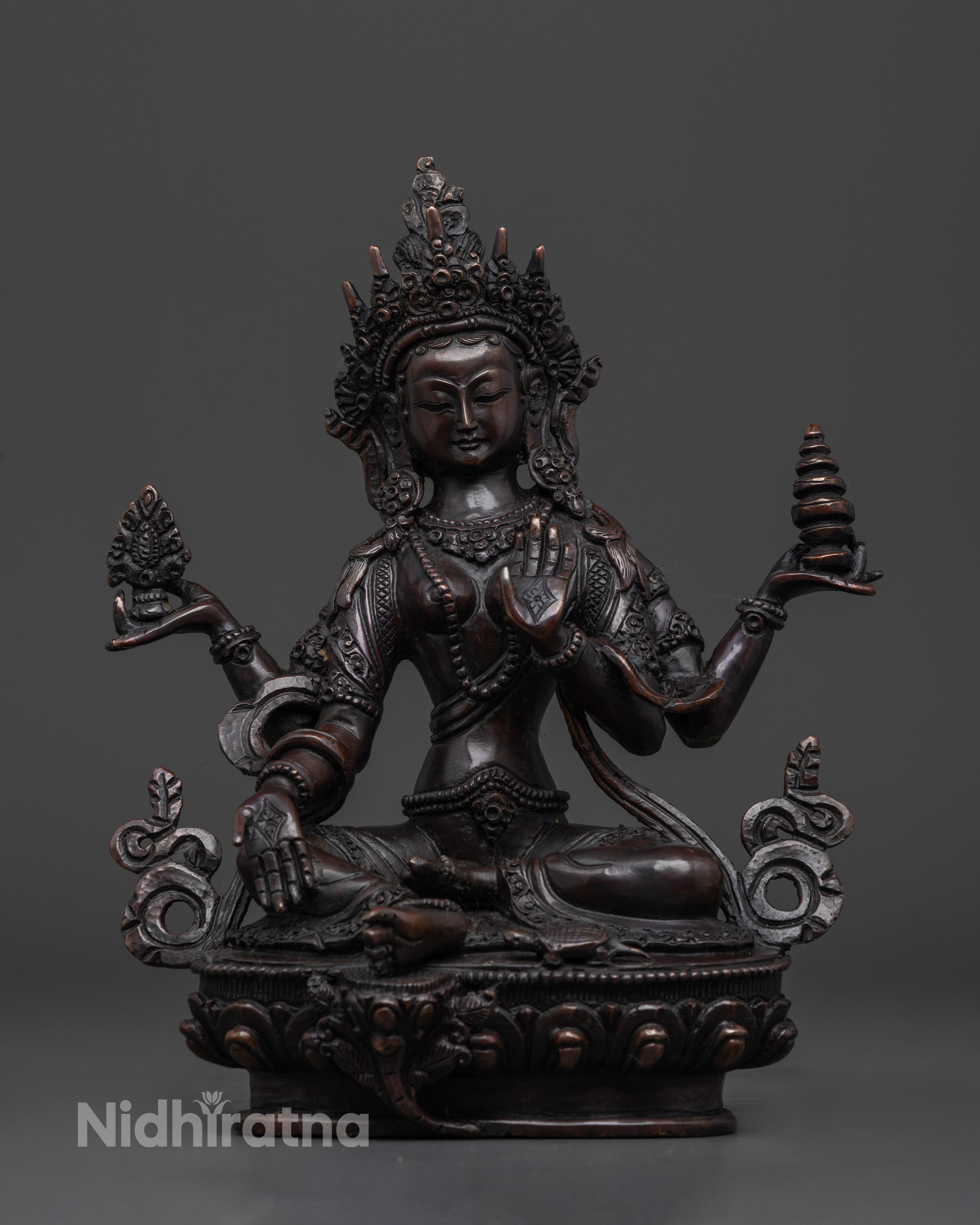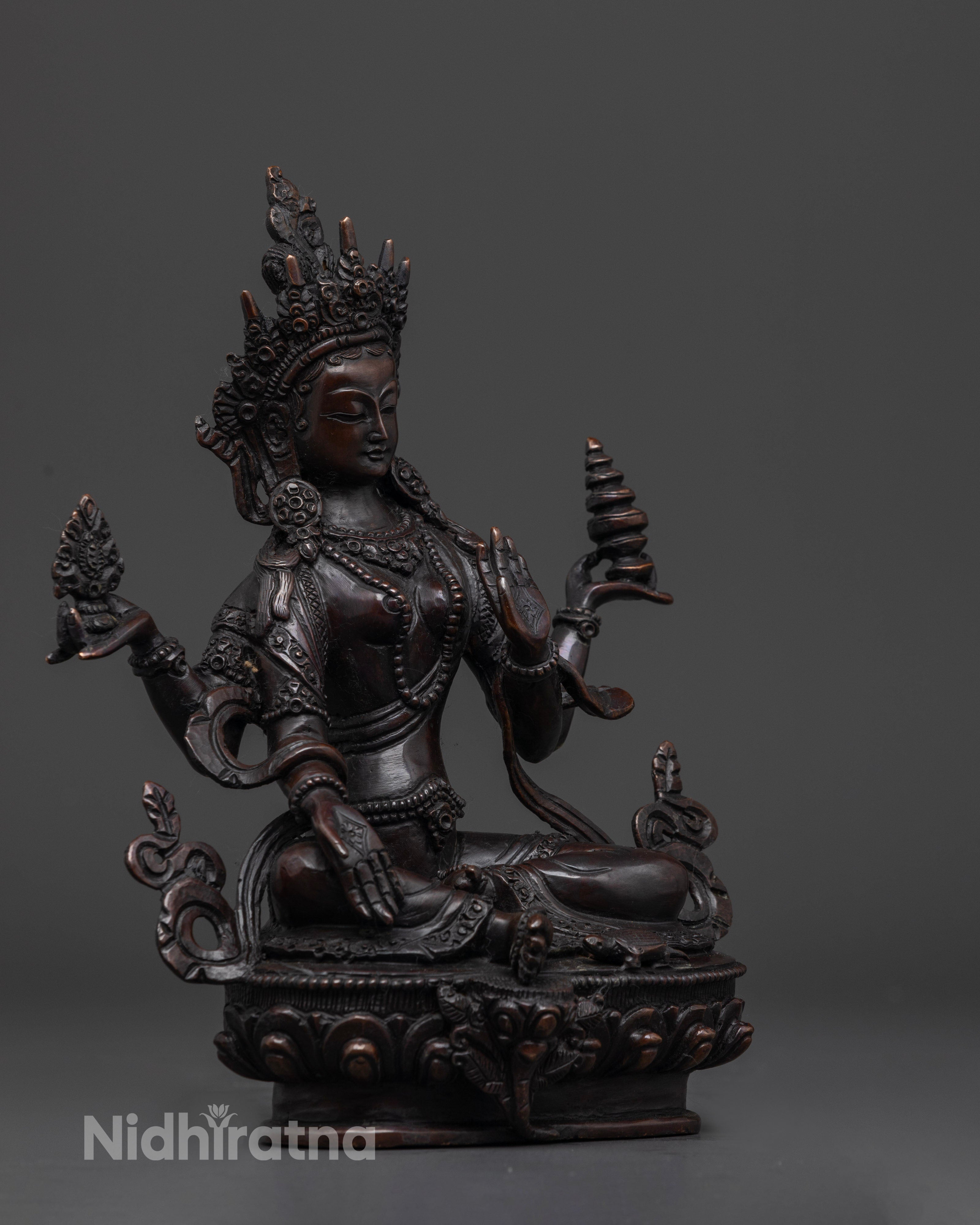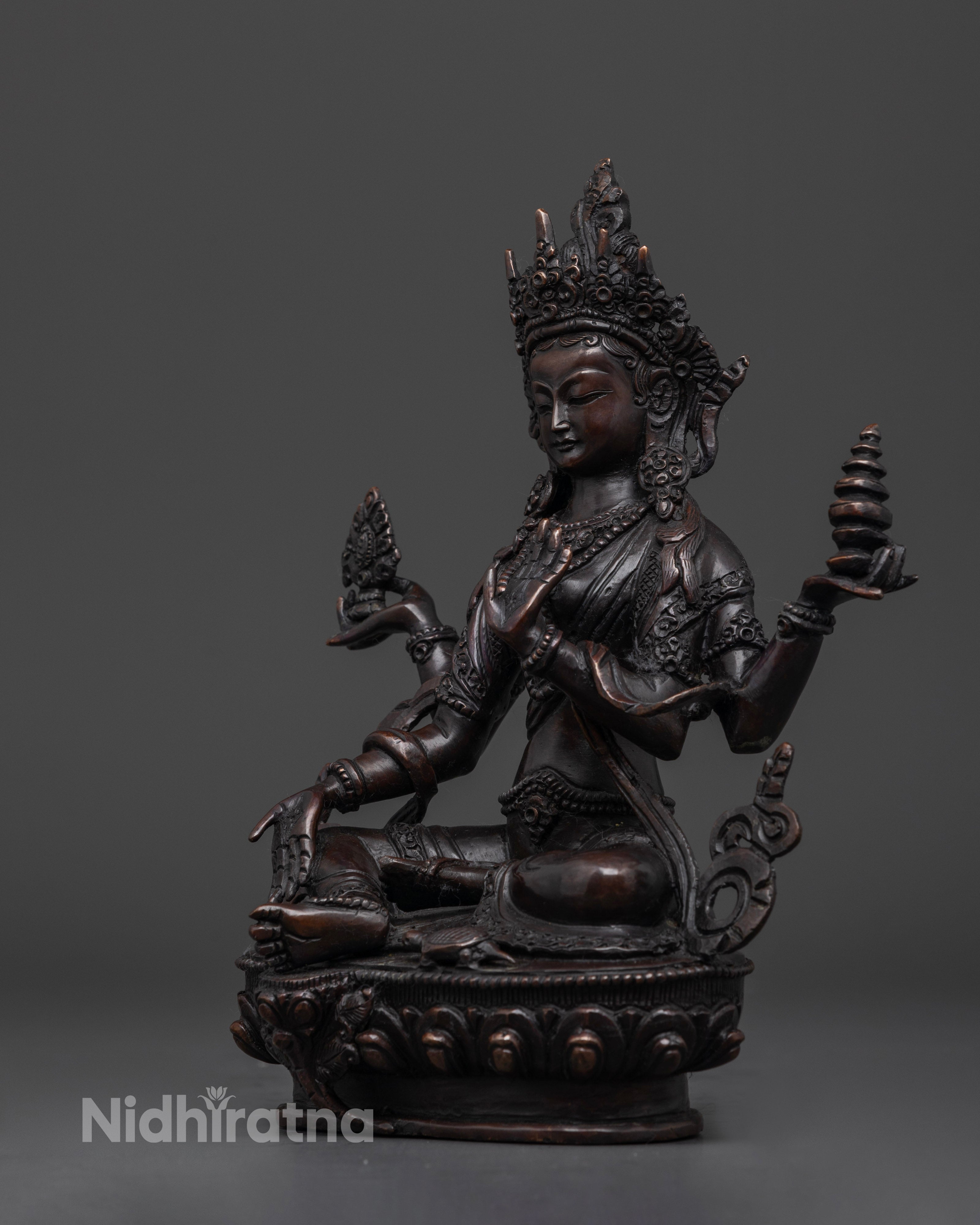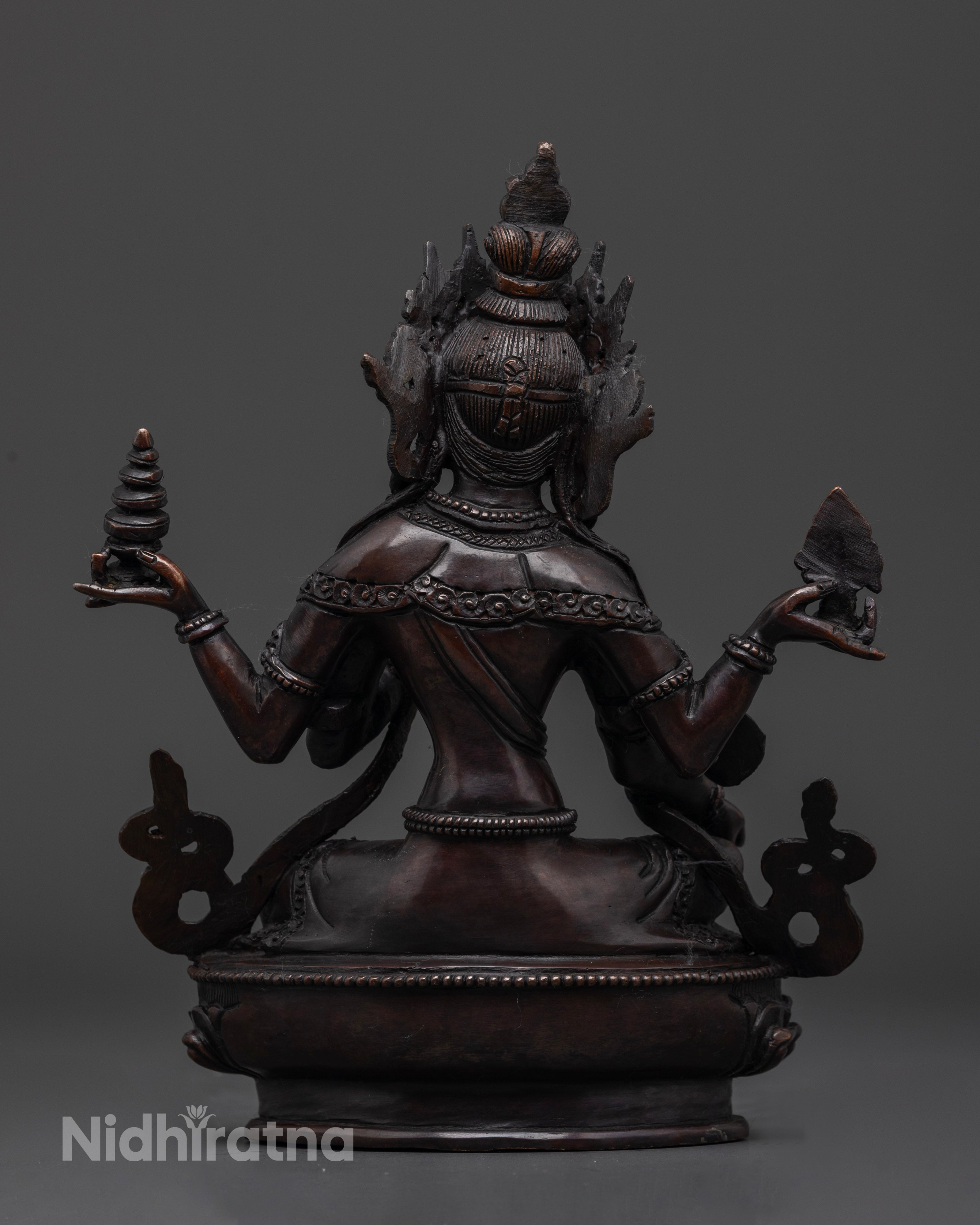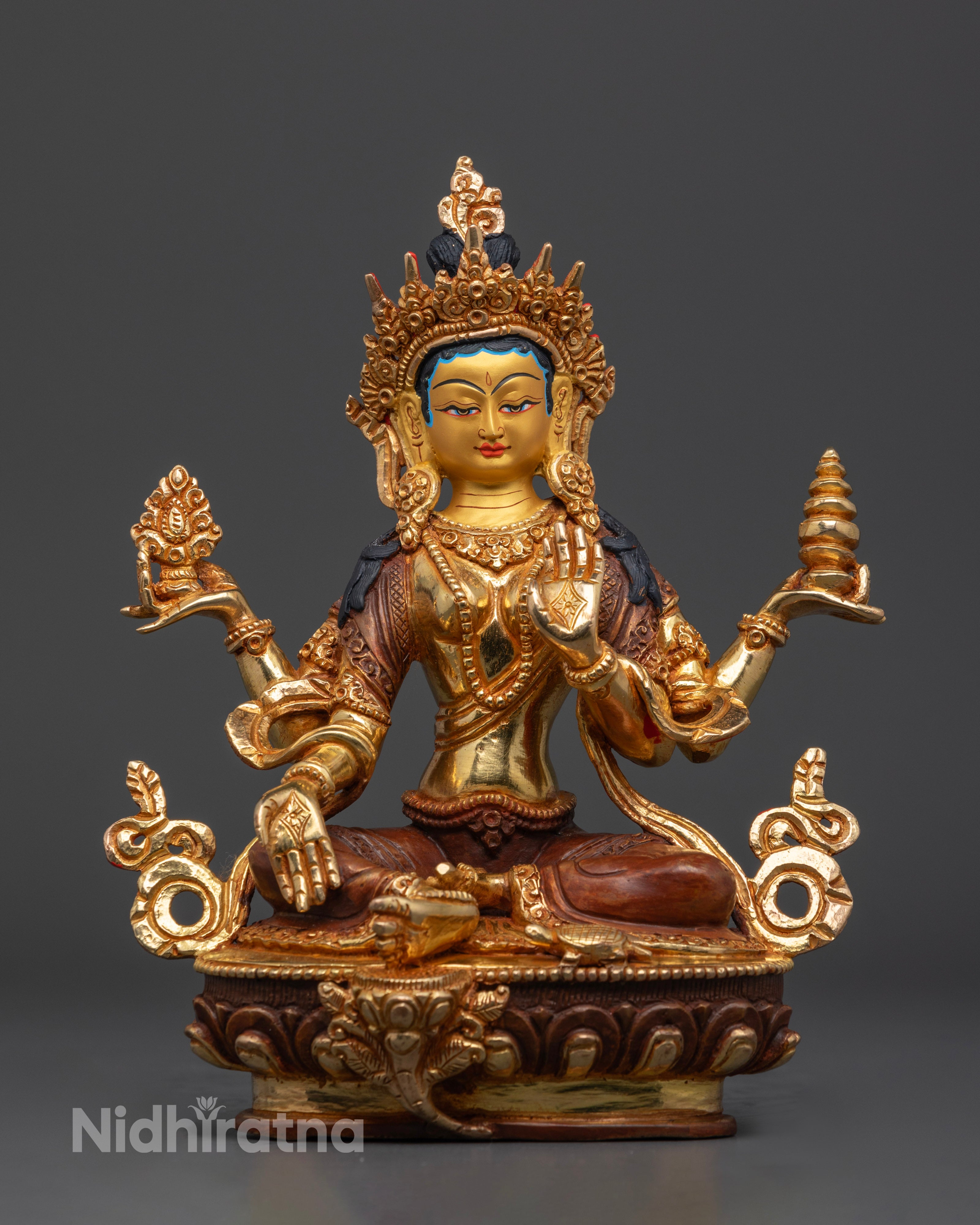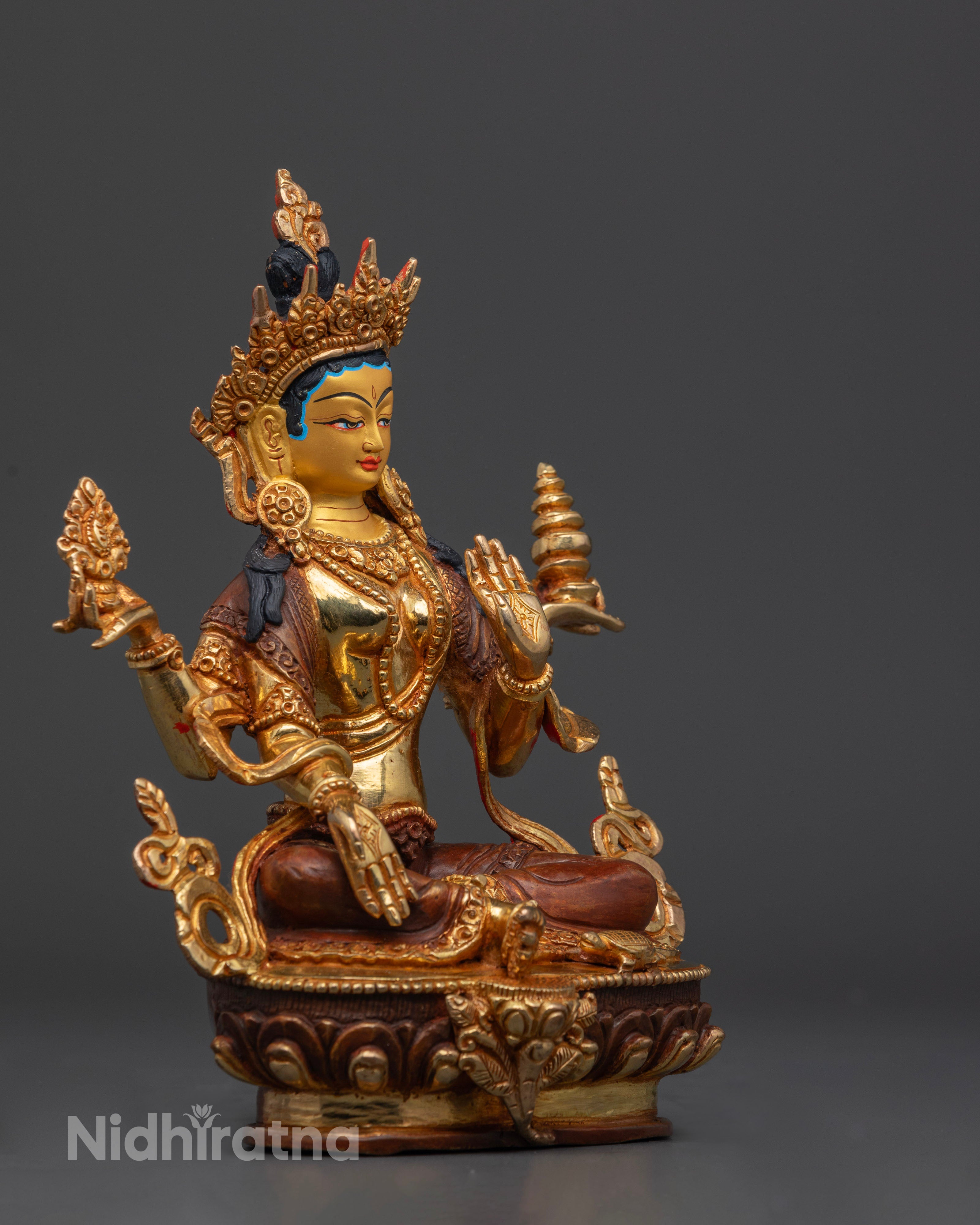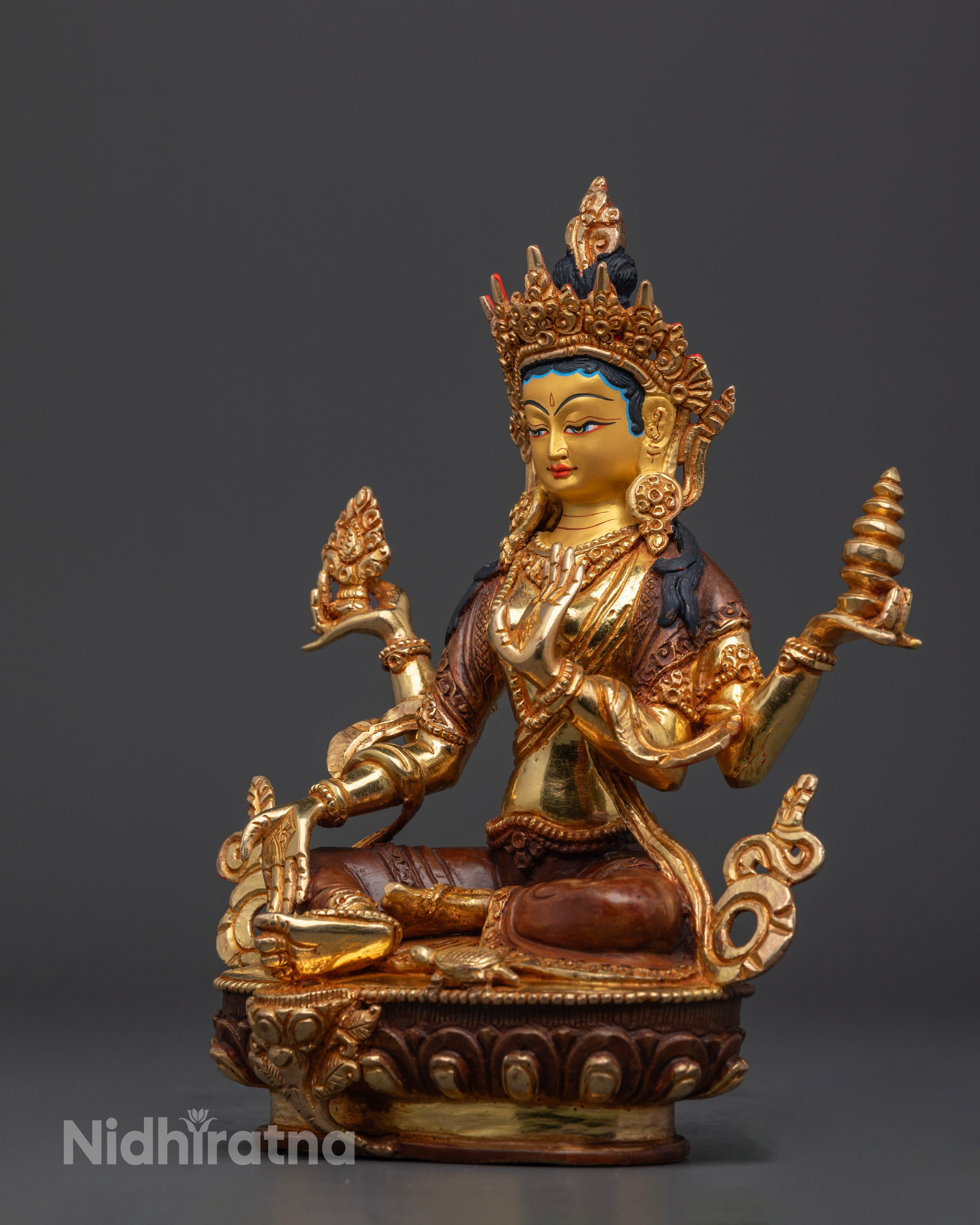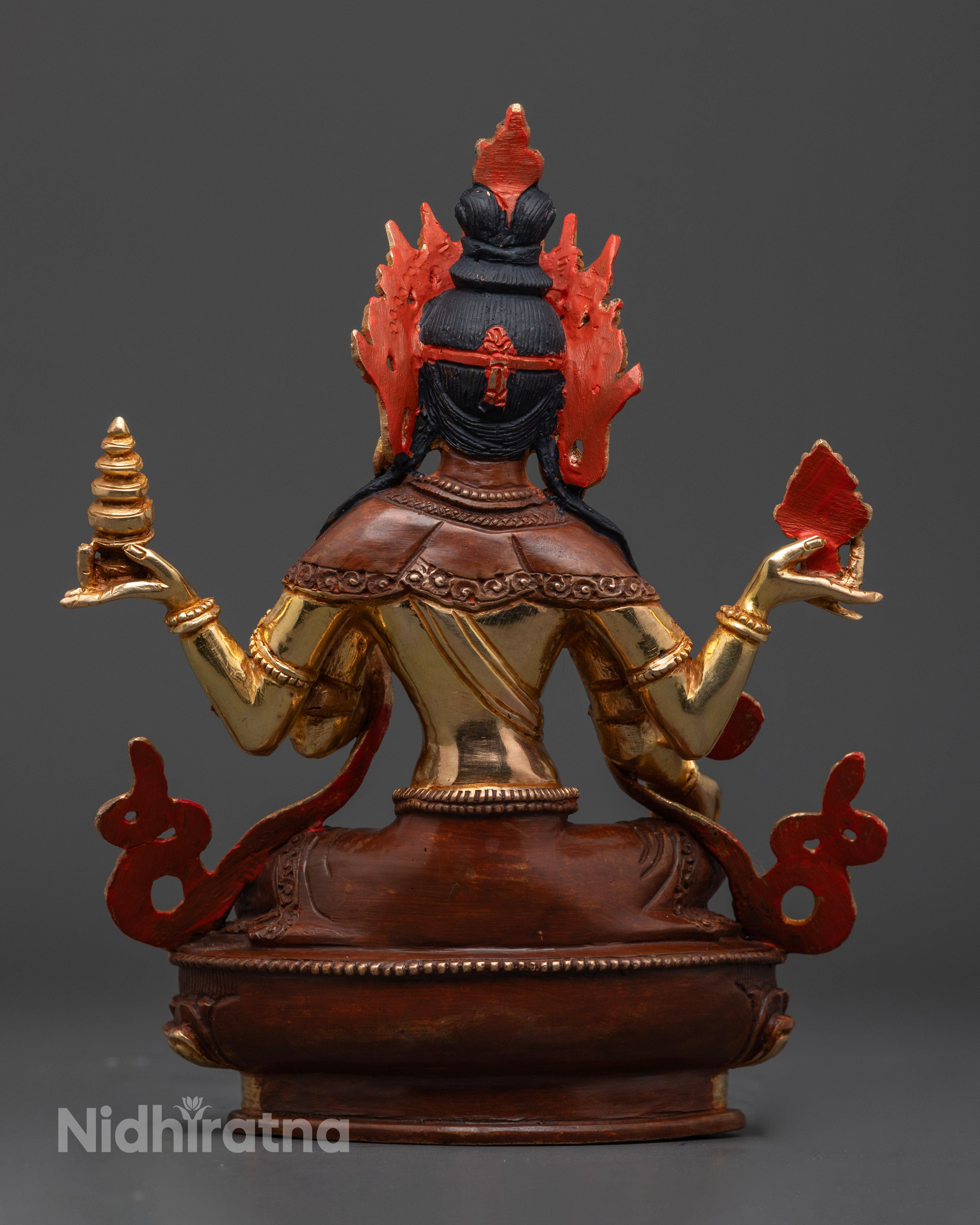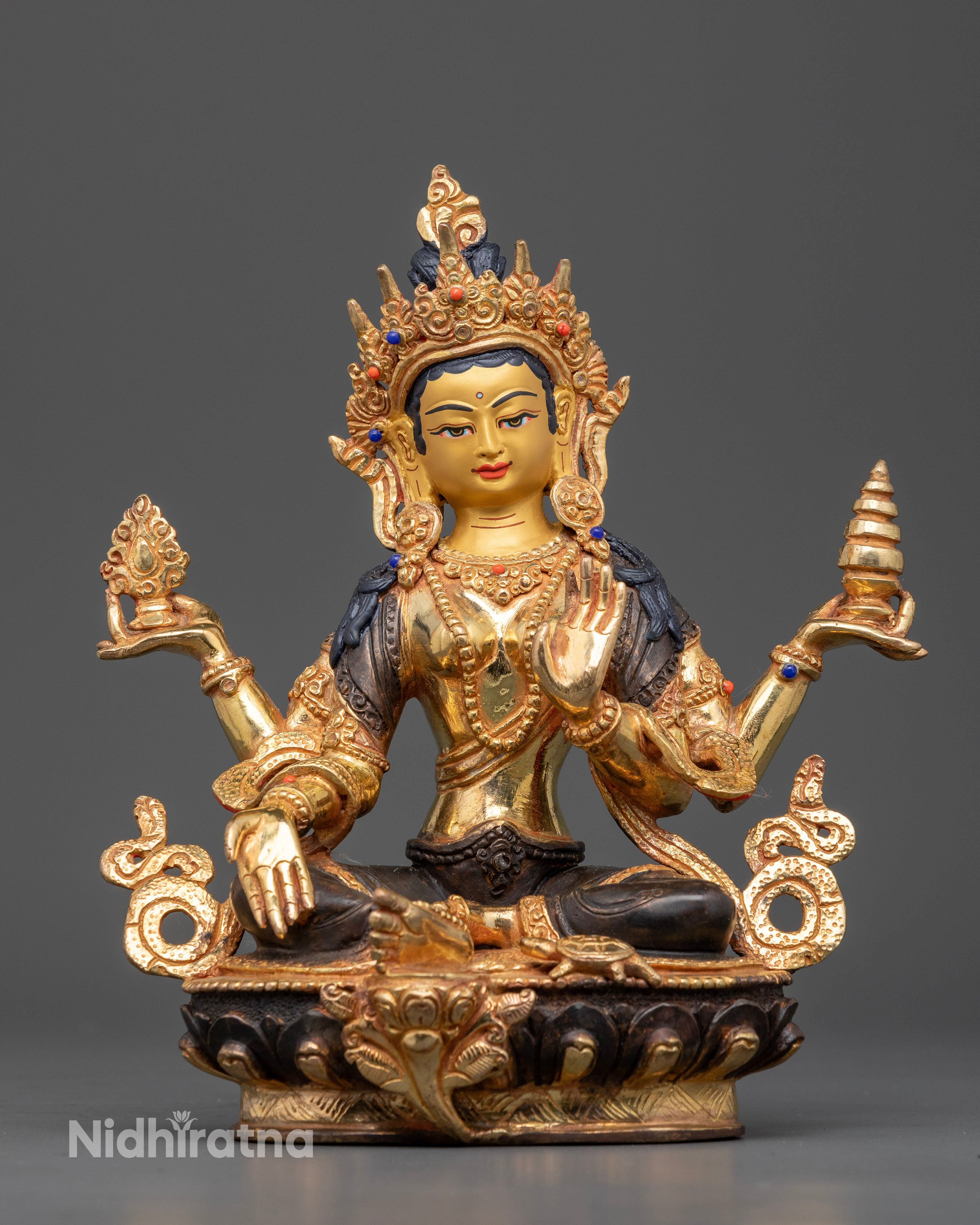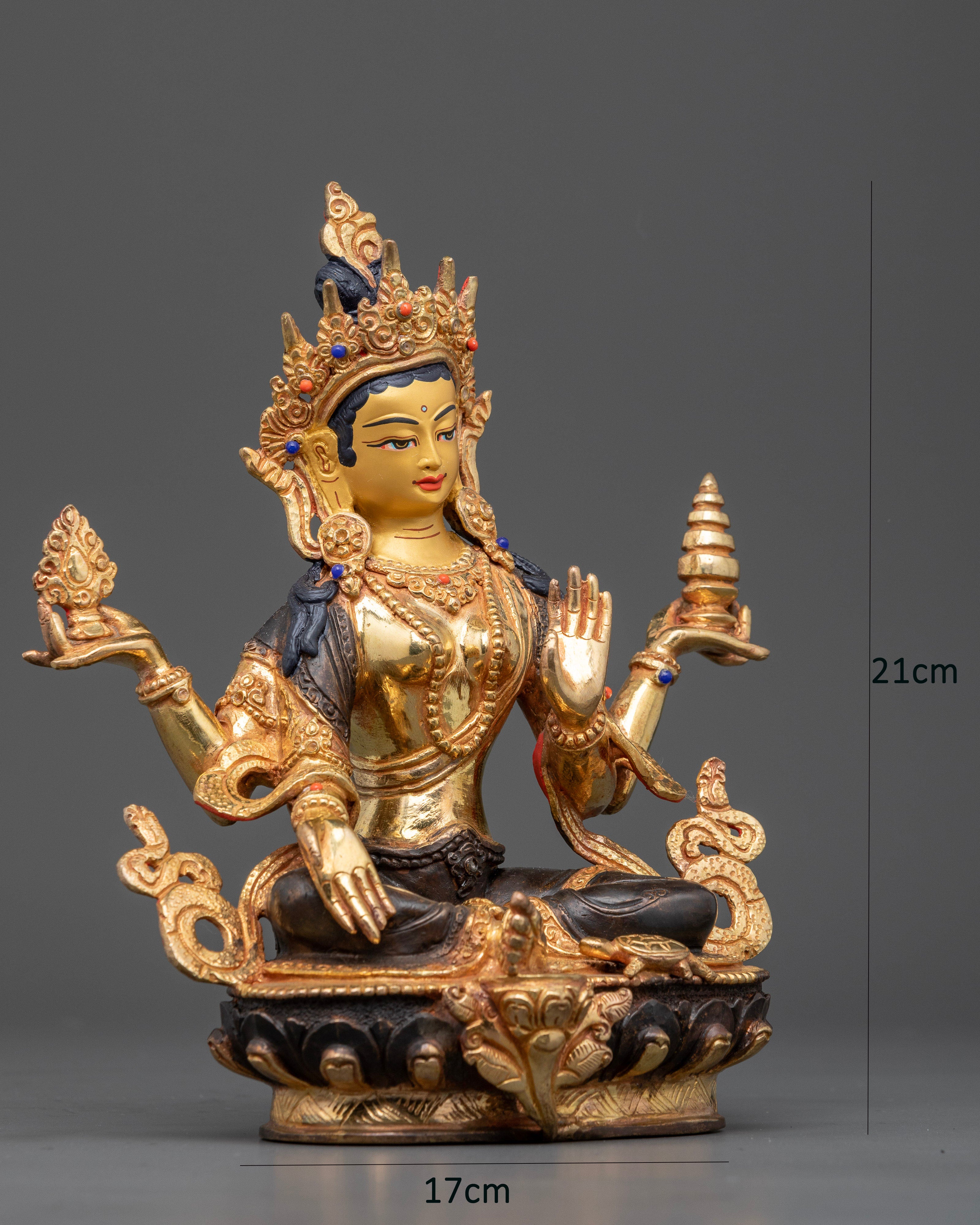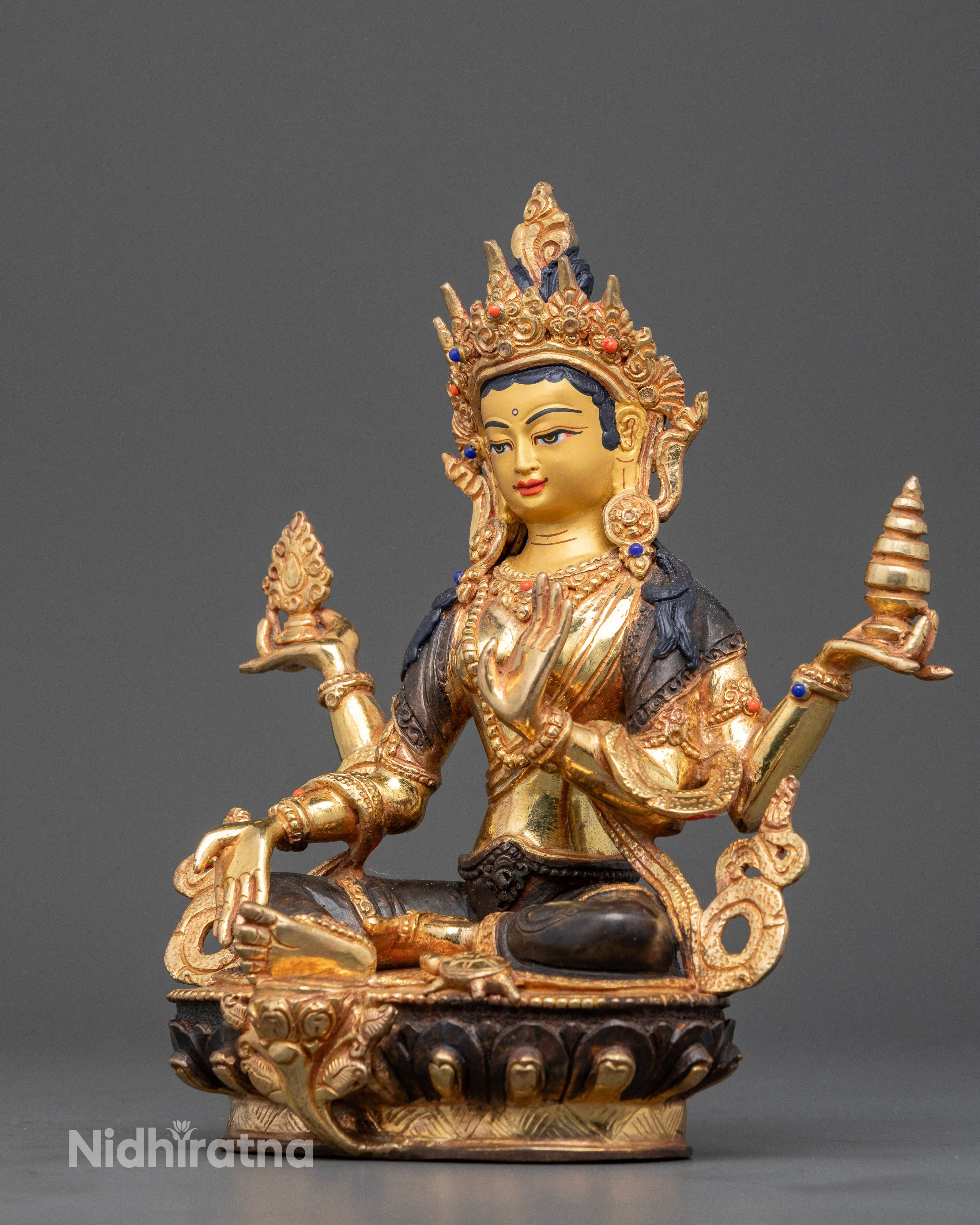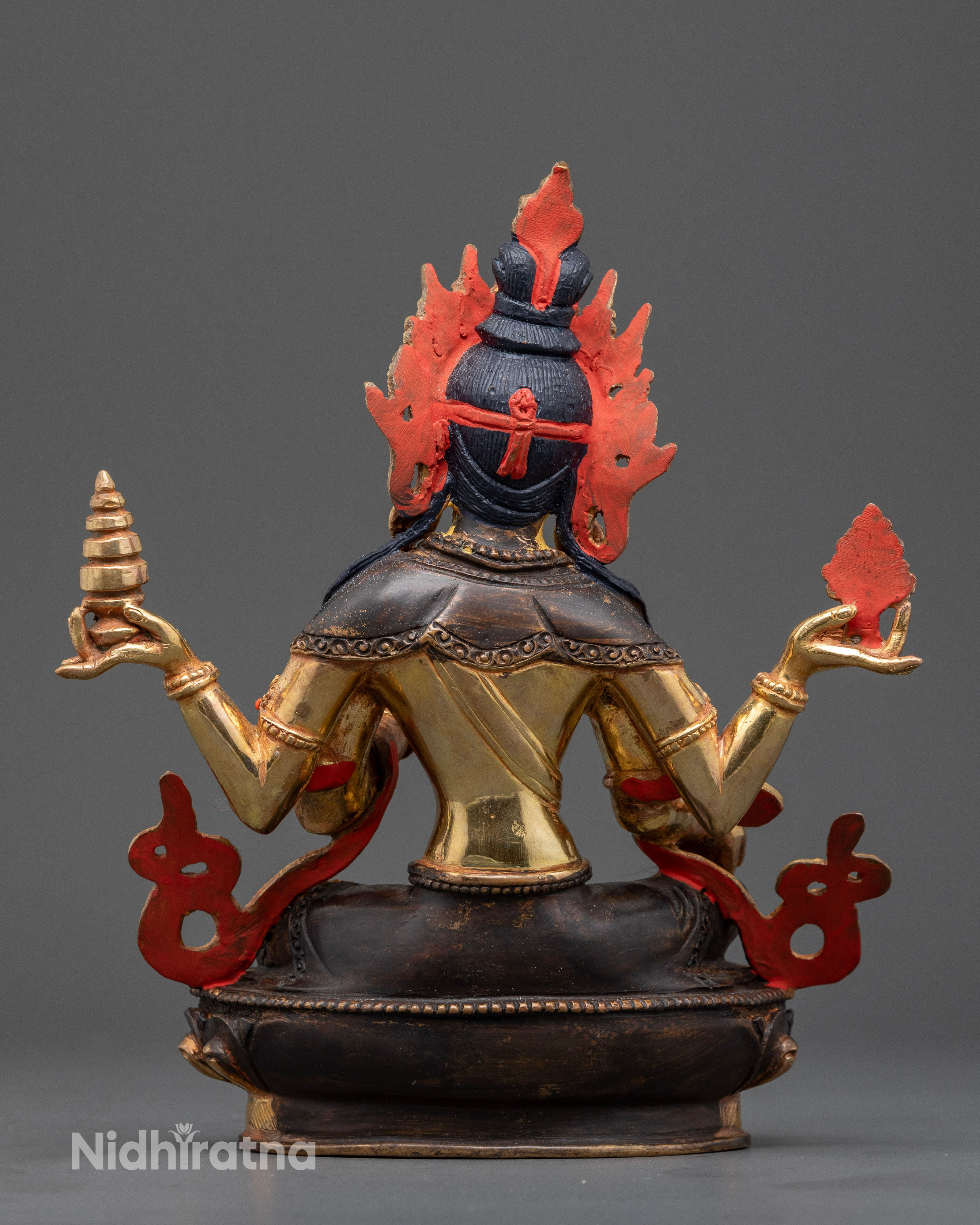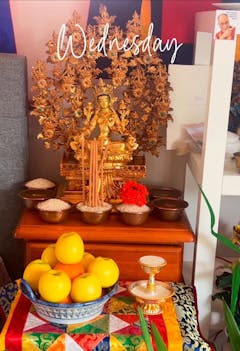Goddess Lakshmi Statues for Wealth
Oxidized Ma Laxmi Statue | For Financial Stability
Maa Lakshmi Idol | Celebrate Wealth & Peace
Laxmi murti : Goddess laxmi statue
Laxmi Statue: Goddess Lakshimi of Wealth, Prosperity, and Abundance
Laxmi statue is a divine representation of the Goddess Laxmi, the beloved deity in Hinduism and Buddhism, who embodies wealth, prosperity, beauty, and abundance. This handcrafted statue, gold gilded on a copper base, showcases Laxmi’s radiant form in all her glory. With her compassionate smile and auspicious presence, she blesses practitioners with material and spiritual prosperity. The intricate detailing of the statue reflects the deep spiritual significance of Laxmi and her vital role in bringing fortune and harmony to the lives of her devotees.
The craftsmanship behind this statue involves years of expertise and devotion. The artists, deeply immersed in traditional techniques passed down through generations, put their hearts into every line and detail. The final piece is a blend of sacred artistry and divine symbolism, offering not just aesthetic beauty but a spiritual connection to the goddess herself.
Laxmi: The Goddess of Prosperity and Divine Blessings
Laxmi, also known as Lakshmi, is the goddess of wealth, prosperity, and beauty in Hindu and Buddhist traditions. She is revered as the dispenser of all forms of abundance, from material wealth to spiritual enlightenment. As the consort of Lord Vishnu in Hinduism and a prominent figure in Buddhism, Laxmi holds immense significance in both religions. She is a goddess who symbolizes the balance of wealth and wisdom, offering prosperity in both the physical and spiritual realms.
Laxmi is depicted as a graceful and serene figure, radiating divine beauty and compassion. She is often shown seated on a lotus flower, symbolizing purity and spiritual awakening. Her presence is said to bring wealth, health, and success to those who honor her, as she embodies the energy of both fortune and well-being.
Symbolism and Features of the Laxmi Statue
The statue of Laxmi is rich with symbolic elements that convey her divine attributes and blessings:
- Posture: Laxmi is commonly depicted seated on a full-bloomed lotus flower, a symbol of spiritual purity and enlightenment. In some representations, she stands with one leg on a lotus and the other resting on the ground, symbolizing her connection to both the earthly and divine realms.
- Facial Expression: Laxmi's face is serene and peaceful, radiating warmth and compassion. Her gentle smile symbolizes her nurturing nature and the blessings she bestows upon her devotees.
-
Attributes: Laxmi is often shown with four hands, each holding symbolic objects that represent various aspects of her blessings:
- A lotus flower: Symbolizes spiritual purity and the blossoming of wisdom.
- A pot of gold: Represents material wealth and abundance.
- A handful of gold coins: Depicts the continuous flow of prosperity and good fortune.
- A conch shell: Represents the divine call for spiritual awakening.
- Color and Robes: Laxmi is often depicted in radiant red, gold, or pink robes, colors that symbolize prosperity, vitality, and beauty. Her attire is richly detailed, reflecting her regal and benevolent nature.
- Surroundings: Laxmi is frequently shown surrounded by elephants, which are symbols of strength, royal power, and abundance. These animals pour water over her, representing the flow of divine blessings and wealth.
Laxmi's Role in Hindu and Buddhist Practices
In Hinduism, Laxmi is one of the most revered deities, worshipped daily in homes and temples, particularly during festivals like Diwali, when devotees seek her blessings for prosperity in the coming year. Her blessings extend beyond material wealth; she is also a goddess of fortune, beauty, and harmony in relationships. She embodies the ideal of abundance that is meant to be shared, leading to prosperity for both the individual and the community.
In Buddhism, Laxmi is considered a protector and a provider of material support on the path to enlightenment. While wealth is often seen as a means to an end, Laxmi teaches that prosperity should be used for the benefit of all sentient beings. Through her, practitioners are reminded of the importance of balancing material and spiritual wealth, using their resources to foster harmony and generosity.
The Mantra of Laxmi
The most commonly recited mantra for invoking Laxmi's blessings is:
"Om Shreem Mahalakshmiyei Namaha"
This mantra is a prayer to the Goddess Laxmi, asking for her blessings of wealth, abundance, and success. The repetition of this mantra is believed to attract prosperity, remove obstacles, and bring blessings to all aspects of life.
Each syllable of the mantra holds profound significance:
- Om: The universal sound, representing the divine energy and connection with the cosmos.
- Shreem: The bija (seed) mantra for Laxmi, symbolizes prosperity, wealth, and abundance.
- Mahalakshmiyei: A reverent address to the great goddess Laxmi, the one who grants both material and spiritual wealth.
- Namaha: A respectful salutation, acknowledging the power and divine nature of Laxmi.
Laxmi's Influence in Daily Life
Laxmi is seen as the goddess who provides for those who are worthy, guiding them toward prosperity and success. Devotees seek her blessings not just for wealth, but also for health, beauty, and good fortune. The worship of Laxmi is an important part of spiritual practice, as it reminds individuals that material wealth should not be hoarded but used to bring about good and spread abundance to others.
The Laxmi statue serves as a constant reminder of her divine qualities: abundance, grace, and balance. By bringing this statue into the home or place of practice, devotees invite her blessings into their lives, creating an environment of prosperity, peace, and spiritual growth.
This statue of Laxmi is not only an artistic masterpiece but also a spiritual tool, guiding practitioners in both their material and spiritual pursuits.

